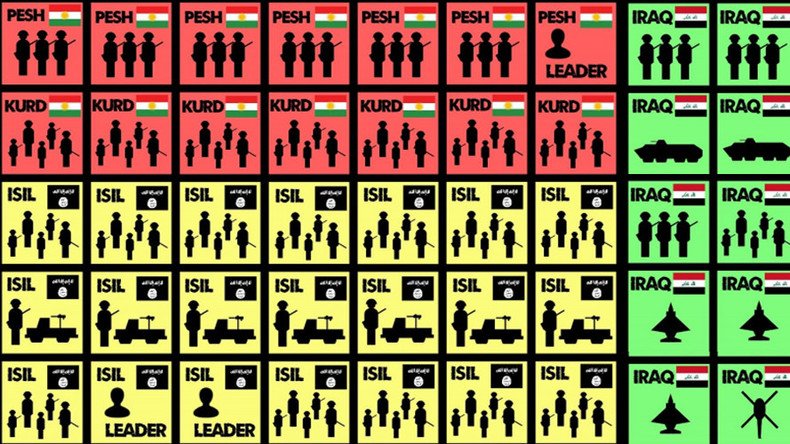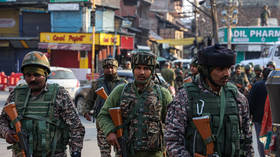‘Crush apostates! Overthrow infidels!’ Welcome to ISIS – the board game

With the help of a map and a pair of scissors, you can now print out and play a board game that simulates the conflict in Iraq. Invented by an academic, it is being used by Canada’s military staff to test real-life war strategies.
The brainchild of Rex Brynen, a political science professor at Montreal’s McGill University, ISIS Crisis is not a conventional board game, with elaborate rules and many-sided dice. Rather, it is a matrix game – a structured role-play simulation in which every player has to explain and justify his next move, while the others react, and an umpire adjudicates, sometimes using a simple die roll.
Rex Brynnen's #ISIS simulation game the highlight of @MIGSinstitute ' #migsprev16pic.twitter.com/z7qStBKQwf
— Kyle Matthews (@kylecmatthews) June 2, 2016
Matrix games were pioneered in the 1990s, but none have been created for the world’s most gruesome current conflict – until now. The six players have to pick one of the six factions in Iraq: Islamic State itself, the Iraqi government, the Sunni opposition, the Kurds, and the US and Iran, acting from the sidelines.

Each group has its own aims, set out at the beginning. For example, Islamic State seeks to “crush the apostate Shiites and Kurds” and “overthrow the infidel American propped up Government in Baghdad,” while Kurds, among other things, look to “secure heavy weapons with which to defend yourself and your people” and the US has try and achieve its objectives while “avoiding US Ground forces from being deployed.”

As in real life, caught between the pieces of the powerful agents on the map, are refugees, UN observers, and non-governmental organizations, as well as lucrative oil fields.
Isis crisis simulation game pic.twitter.com/2IMiI7g12z
— MIGS (@MIGSinstitute) October 26, 2015
The flexibility of the game – which can be updated endlessly to reflect the latest developments – and its open-ended nature make it the perfect simulation tool for professionals. In fact, Brynen occasionally shies away from the game label, in favor of calling ISIS Crisis a “narrative discussion.”
Having already been trialed at Sandhurst, the UK’s prime military academy, and the Montreal Institute for Genocide and Human Rights Studies, Brynen recently took his game to the Canadian military. Several leading members of the Defence Research and Development Canada (DRDC) the army’s planning department sat down for a session,
"This certainly does have potential to add additional rigor to our process," Colonel Ross Ermel, who is in charge of updating the country’s military doctrine, told CBC.
Regular sessions for the top brass are now being contemplated for later this year.
"It does show some promise. It's one of the things that we are certainly considering," said Ermel.
Roleplaying in serious games improves predictive accuracy(along w/debriefing) more than simple analysis. #migsprev16pic.twitter.com/Oy2SQqDkFQ
— EIHR (@EIHumanRights) June 2, 2016
Brynen believes that such interactive games, in which players compete with each other, can produce better predictions of actual conflict developments than reports, in which the dice are quite often loaded in favor of describing a pre-ordained, desirable outcome. The optimism of endless US plans for Iraq’s reconstruction post-2003 are a testament to that.
Brynen has previously said that the games provide “an antidote to hubris."
While ordering your ISIS fanatics to cleanse towns of sectarian opposition is disconcerting enough, the leading matrix game portal, PAXsims, has even more alarming scenarios, such as Kaliningrad 2017, in which Russia and NATO face off in a war in Eastern Europe. That game has already been play-tested at the US Army War College.













